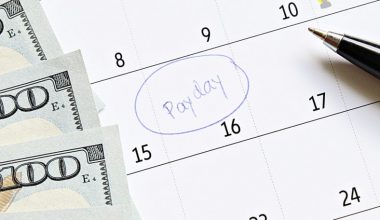The method of using historical sales data to create an estimation of an upcoming forecast for consumer demand is known as demand forecasting. The aim of demand forecasting is to provide your business with an estimation of how many services or products customers will buy in the near future. In the course of this guide, we’ll go through demand forecasting types and models.
Basically, there are a lot of data points and insights you can get from your POS data. These reports are important for forecasting, not only inventory but also demand.
There are many other factors that affect consumer demand, including cash flow, profit margins, turnover, risk evaluation, capacity planning, and mitigation plans. All of which are reliant on demand forecasts. In other words, each has a critical role to play in achieving a precise forecast.
What Is Demand Forecasting and How Does It Work?
Demand forecasting, also known as sales forecasting, is the method of estimating potential consumer demand over a set period of time. It incorporates historical data as well as other data.
Businesses have useful knowledge about their prospects in the existing market as well as other markets when demand forecasting is properly applied. It also allows managers to make informed decisions about business growth plans, pricing, and market potential.
Businesses that fail to use demand forecasting risk making bad decisions about their target markets and goods. These rash decisions can have long-term consequences for customer loyalty, supply chain management, inventory holding costs, and, eventually, profitability.
The Importance of Demand Forecasting
Demand forecasting is relevant for businesses for a variety of reasons:
- Businesses may use revenue forecasting data to help with planning, goal-setting, and budgeting. It’s possible to develop a procurement plan to ensure your supply meets consumer demand at the product level if you have a clear idea of what your potential sales could look like.
- Inventory levels can be better optimized, inventory turnover rates can be increased, and holding costs can be reduced.
- Businesses may also use sales forecasting to predict and correct any problems in the sales pipeline ahead of time. This allows them to monitor their success over time. Many e-commerce company owners understand that having too little or too much inventory can be harmful to operations.
- Demand forecasting gives you insight into your upcoming cash flow, allowing you to prepare more effectively for supplier payments and other operating costs while still investing in your company’s growth.
- Anticipating demand entails knowing when to hire more people and assign other resources to ensure that operations run smoothly during busy times.
Methods of Demand Forecasting
The majority of conventional demand forecasting methods can be classified into one of three groups:
Qualitative Forecasting
When there isn’t a lot of data to deal with, qualitative forecasting methods are used. This is popular at the early stages of a company’s development or when new products are first introduced to the market. Other data, such as market analysis, comparative analyses, and expert opinions, are used to generate quantitative demand estimates in this case.
Analysis of Time Series
When historical data for a product line or a product is available, time series analysis is an option. Businesses opt to use the time series analysis method for demand forecasting when the patterns are obvious. Seasonal variations in demand, main sales trends, and cyclical patterns can all be identified using time series analysis.
However, for well-established companies with many years of data to work with and reasonably stable trend trends, the time-series approach is most successful.
Causal Demand Forecasting Models
The causal forecasting model is the most advanced and difficult demand forecasting method available. It makes use of precise data about the relationships between market variables including economic forces, competitors, and a number of other socioeconomic factors. In order to create an effective causal model forecast, you’ll need historical data.
For example, an ice cream shop may use variables like their marketing budget, promotional events, new ice cream shops in their region, competitor prices, historical sales data, overall ice cream demand in their area, their local unemployment rate, and even the weather to construct a causal model forecast.
Metrics for Sales Forecasting
Please identify and monitor the following metrics for the entire forecast period once you have the foundation for your sales forecast.
Product Lead Time
The time it takes from placing a purchase order to having each product ready to sell.
Sales Period
How many months do you expect each product to sell?
Costs Paid Per Purchase
When a buying order is put, what percentage of the product costs is paid?
Payable Days
How much longer do you have to cover the remaining outstanding inventory costs?
Stock Level
Based on predictions, the sum of each commodity you must hold in stock.
Costs of Purchase
The funds needed to make essential purchases.
Types of Demand Forecasting

There are many forms of demand forecasting, and it’s important to understand each one and what it means. For the most part, they follow certain sequences ranging from the level of detail, time period, and market scope forecasted. Let’s take a look at a couple.
The main types of demand forecasting include the following :
Passive Demand Forecasting:
Passive Demand Forecasting is often a tool for businesses that have a strong base but conservative development strategies. Simple extrapolations of historical data are performed with the fewest assumptions possible. This form of forecasting is uncommon, but it’s often the first choice for small and local businesses.
Active Demand Forecasting
Active demand forecasting is a type of forecasting that comes in handy when it comes to scaling and diversifying companies with ambitious growth strategies in terms of marketing efforts, product portfolio development, and competitor activities as well as the external economic climate.
Short-Term Demand Forecasting:
For short-term cycles, short-term demand forecasting comes in handy (usually 3-12 month periods.) When working in short terms, you must understand seasonal market trends as well as the impact of tactical decisions on consumer demand.
Medium/Long-Term Demand Forecasting:
Medium/Long-Term Demand Forecasting is typically used for periods of 12-24 months ahead of time (some businesses use 36-48 months). Long-term forecasting can influence a company’s strategic planning, marketing, and sales planning, financial planning, capacity planning, and capital expenditure planning, among other things.
External Macro Level Demand Forecasting:
This form of forecasting is concerned with larger market fluctuations that are influenced by the macroeconomic climate. External forecasting is designed to evaluate a company’s strategic goals, such as extending its product range, penetrating new customer markets, technological disruptions, and even paradigm changes in consumer behavior, as well as risk reduction strategies.
Internal Business Level Demand Forecasting
As the name implies, this method of forecasting focuses on the business’s internal operations. Brand groups, distribution divisions, financial divisions, and production are all examples of this. Furthermore, it includes Yearly revenue forecasts, net profit margins, COGS estimation, cash flow, and other internal forecasts.
Examples of Demand Forecasting
We can use a variety of different demand forecasting examples, so we’ll give you a few to start with. As an example, let’s look at Ford. Ford wants to build a market forecast for the 2018 Mustang 5.0 V8. What exactly do they do? They’d look at the vehicle’s revenue over the previous 12 months. They will use this information to estimate revenue for the next 12 months, as well as inventory and production requirements. Then t They can break down sales into packages and categories as needed.
Example 2:
The last 24 months of actual sales of a famous women’s denim jeans were referred to by a leading clothing company. To construct a demand forecast, an analysis is performed on a specific pair of jeans. The company predicts a high demand for the next 12 to 24 months, following the jeans’ market potential. As a result, the company tracks every product, category, size, color, style, and other details. The result whether positive or negative will help influence future decisions on the product.
Example 3
Take a look at Walmart, a big retailer. They have over 11,000 stores in 27 countries, with an average inventory of 32 billion dollars. As a result, their supply chain is very intricate. Their logistics are well-known for their accuracy and technical prowess. However, in 2013, they gained a reputation for getting a major out-of-stock issue in-store. Mismanaged inventory was blamed for the lack of product on the shelves, as the stock was available in warehouses but not enough staff was available to carry it to the shelves. In this case, cost-cutting steps resulted in a poor customer experience for many.
It would have been very easy to avoid this with a better demand forecast in play.
Example 4
A major automaker examines real sales data from the previous 12 months based on the model, color level, and engine type of its vehicles. They estimated short-term demand for the next 12 months based on projected growth for buying, production, and inventory planning purposes. This market preparation means that they have enough red vehicles, four-door cars, and supercharged engines for the coming year to satisfy consumer demand.
Seasonality and Other Trends Forecasting
Seasonality refers to fluctuations in demand that occur on a regular basis, such as during the holiday season. Trends, on the other hand, may appear at any time and indicate a general change in behavior. Past sales data can however, help with trend projections, which are crucial in planning for what the market demands.
Furthermore, to effectively plan your inventory management policy, organizational processes, and marketing efforts, it’s imperative to factor in forecasts of Trends and seasonality when it comes to demand forecasting. Since they know customers will be shopping for presents during the holidays, retailers recruit extra staff.
Conversely, for customers to buy, you’ll need more than just the stock. Staff is needed to bring stock onto the shelves, out of the warehouse for online orders, and other tasks. As a result, shipping companies such as FedEx and USPS employ more delivery drivers and package handlers. Also with additional employees, the increased volume will pose problems for both companies and customers. Forecasting ensures that you do not run out of manpower to meet demand.
Sales forecasting isn’t a one-and-done process. It’s a continuous procedure that should include:
Optimizing the consumer experience, distribution channels, product offers, and more to actively shape demand.
Using advanced analytics to create an insightful and agile response to demand
Demand forecasting is an excellent way to predict what your customers will expect from your company in the future so that you can properly plan inventory and services to satisfy the demand.
Forecasting demand helps you to save money on holding costs and other operating expenses when they are not relevant. At the same time, they also ensure that you have what you need to manage peak times when they happen.
Automated Demand Forecasting
For companies that deal with rapidly evolving markets and consumer demands, traditional methods of manually manipulating and analyzing data for sales forecasting aren’t realistic.
Demand forecasting must happen in real-time for companies to be genuinely agile and have an up-to-date data-informed approach to their decision-making, which means you need technology to do the work for you.
Using PLANERGY’s main sales and inventory info, it’s simple to spot trends and gain insights into potential demand at your desired level of granularity. You can also use the framework to set up automatic inventory notifications that suggest reordering quantities based on expected sales demand. Without having to do any planning manually, you’ll know when to order stock and make data-driven business decisions, resulting in improved cost efficiency and time savings – two things every business requires to succeed.
In Conclusion
Having gone through demand forecasting models, types, and examples, taking advantage of this technique shouldn’t be a problem. Either way, should you encounter any issues in this regard, you can reach out on the comment section.
What Is Demand Forecasting Method?
This method is based on past product demand and attempts to project the past into the future. Economic indicators are used to forecast business developments in the future. The product’s demand is predicted based on future trends. A composite index of economic indicators is created.
What Are the 3 Levels of Demand Forecasting?
Demand forecasting can be done at three different levels: macro, industry, and firm. Forecasts for broad economic conditions, such as industrial production and national income allocation, are made at the macro level.
What Are the 4 Basic Forecasting Method?
While there are many commonly used quantitative budget forecasting techniques, there are four basic methods :
- straight-line,
- moving average,
- simple linear regression
- multiple linear regression.
What Are the Five 5 Determinants of Demand?
5 main demand determinants for goods and services
- Income. When a person’s salary rises, he or she may afford to buy more expensive goods or buy them in larger quantities. .
Price. - Customer expectations.
- tastes, and preferences.
- Economic conditions.






